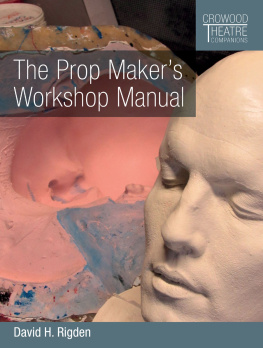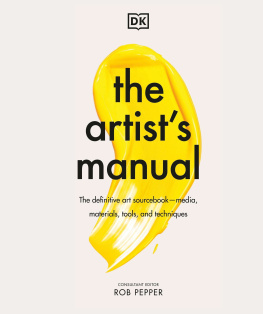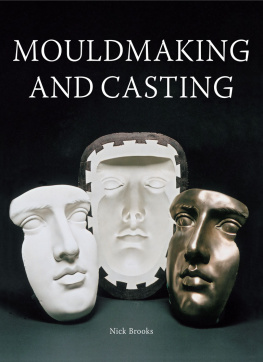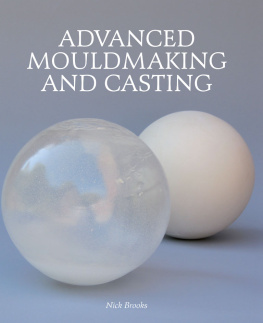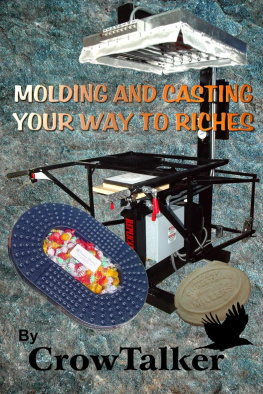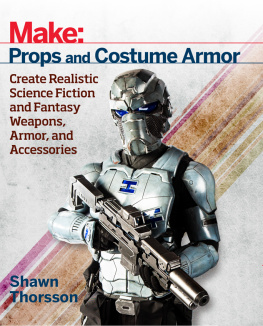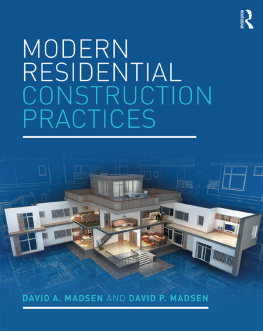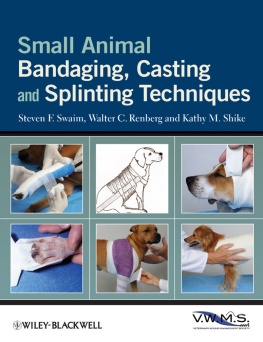The Prop Makers
Workshop Manual
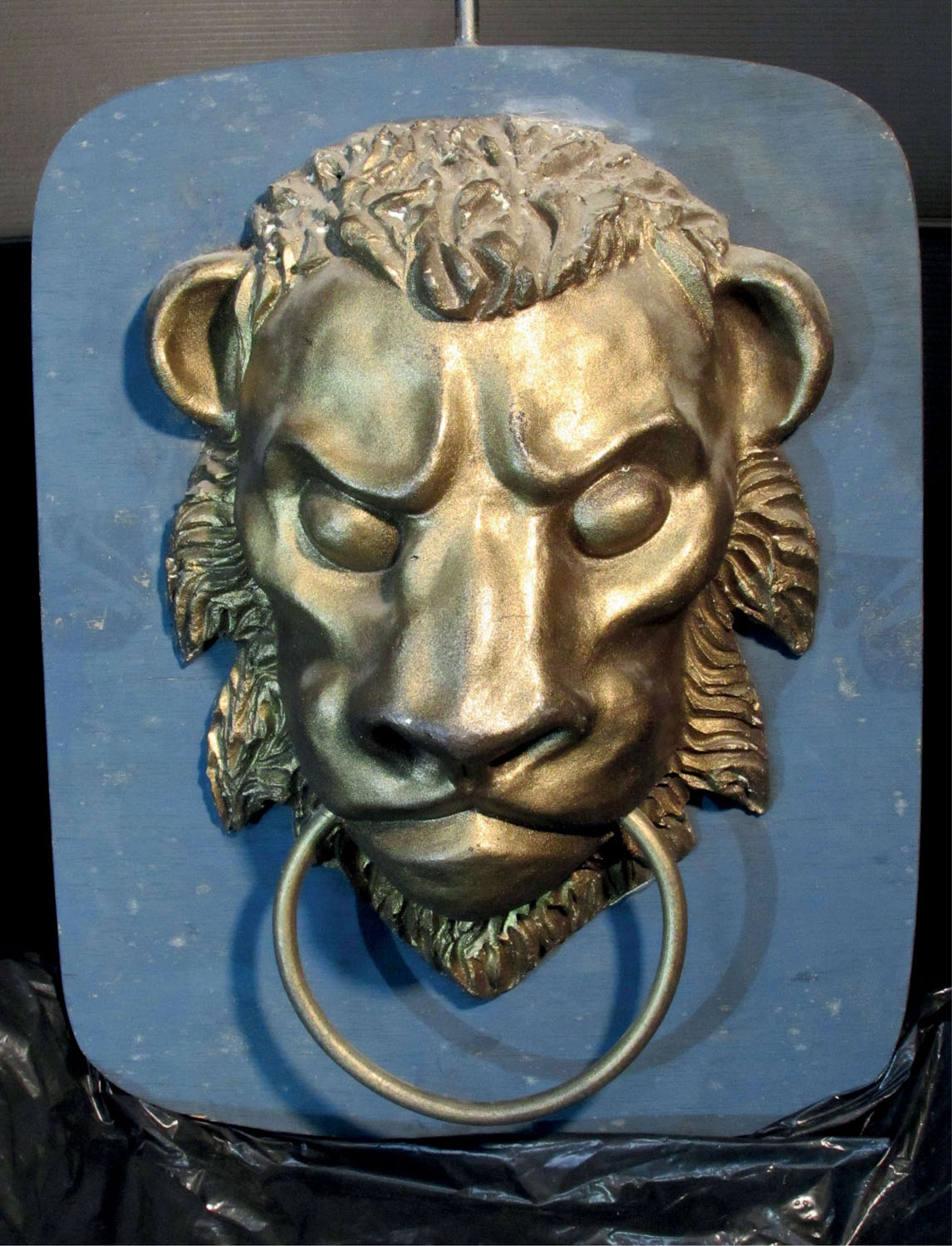
The Prop Makers
Workshop Manual
David H. Rigden

THE CROWOOD PRESS
First published in 2018 by
The Crowood Press Ltd
Ramsbury, Marlborough
Wiltshire SN8 2HR
www.crowood.com
This e-book first published in 2018
David H. Rigden 2018
All rights reserved. This e-book is copyright material and must not be copied, reproduced, transferred, distributed, leased, licensed or publicly performed or used in any way except as specifically permitted in writing by the publishers, as allowed under the terms and conditions under which it was purchased or as strictly permitted by applicable copyright law. Any unauthorised distribution or use of this text may be a direct infringement of the authors and publishers rights, and those responsible may be liable in law accordingly.
British Library Cataloguing-in-Publication Data
A catalogue record for this book is available from the British Library.
ISBN 978 1 78500 504 6
Frontispiece: Scrooges Door Knocker.
CONTENTS

Bottoms heads from A Midsummer Nights Dream, from top to bottom: full head with articulated jaw with lower teeth and cable-operated bendable ears; slush mould latex casting with three-quarter face (rehearsal head); handmoulded, stained and stitched leather head with steam punk goggles and mixed wool for the mane.
INTRODUCTION
1,001 WAYS TO MAKE A PROP
There is an old saying: There are many ways to skin a cat. This is a flat statement of fact, which can open a world of opportunities to prop makers and screams of complaint from cat lovers. Before you start to get worried no cats have been harmed in the writing of this book it is just an adage to highlight a point. What has this got to do with prop making? A pertinent question and well asked. In my thirty-plus years of making props professionally I have come to adapt this saying to 1,001 ways to make a prop. As a prop maker, you should be flexible, adaptable, creative, and develop a wide knowledge of materials and techniques. Each prop can be made in many ways, the only limitations being the abilities, skills and knowledge of the individual prop maker. To use another metaphor, the more strings you have to your bow, the more options you have when you are designing and/or planning the making of a prop.
But why should there be 1001 ways? A deliberate exaggeration, but one that I have used for many years when training students in the art of prop making for professional theatre. The problem I came up against in my early years of training students was getting them to comprehend that the materials and processes that we were using were not limited to the prop that we were making. For example, if we had made a teapot from card and papier mch (or a gargoyle sculpted from scrimmed and textured polystyrene, or a tree from timber frames and poor mans fibreglass, for example), the assumption would be that every time you made a teapot it would be crafted from papier mch rather than other any choice or combination of other materials that would fit the brief. The question to ask when tasked with making any prop is, what skills and resources are available to me to fit the budget and deadline that I have to make the prop within?
Prop making is not an exact science; it is a largely creative process that is built on the foundations of trial and error pretty much the story of human society in a nutshell. But that trial and error introduces us to another old saying: Necessity is the mother of invention. Prop makers over the years have looked at a wide variety of materials to expand the possibilities of what can be achieved. These materials have been sourced and absorbed from industries all over the globe, from natural products like latex (natural rubber) to the latest thermoformable plastics and the possibilities of 3D printing. There are new materials popping up all the time that could have potential in the prop-making world, but whether you get to use them will come down to availability and cost. Some new products may be readily available in some countries but not others due to import restrictions, which could be because of patent issues or legality issues regarding transportation and/or different health and safety laws. Whatever the case, there will always be a way to achieve what you need to. It just requires knowledge and a little thought Oh, and a fair bit of practice I may mention this a few times throughout the book.
WHO IS THIS BOOK FOR?
This book is aimed at anyone who wants an introduction to prop making, from basic skills through to intermediate-level advice, with the intention that once you have developed a proficiency of the materials and techniques within, you will be well equipped to achieve a multitude of tasks. Mastery of these techniques and processes comes through good old practice. The more you put into the work in terms of blood, sweat and tears, the more you will get out of it which is the same with anything in life that is worth doing. Whether you are entering this from the perspective of a hobbyist or professional, the same principle applies. Through practice you will develop the hand-eye co-ordination required to make the work easier and quicker and thus become more proficient. You will also become more familiar with quantities and costs and the potential risks involved when choosing various materials and processes, which will help you to make the most appropriate choices for the job at hand.
NO RECIPES
The title of the book, The Prop Makers Workshop Manual, states the intention of the contents within. If you are expecting to open the book to find specific instructions on how to make a chicken, a Viking helmet or a fireside settle, you must suffer disappointment. This is not a recipe book for individual props. However, you will be presented with a multitude of choices and techniques that will enable you to make many hundreds of items. Within these pages, you will be presented with, and guided through, materials, processes and techniques that have been tried and tested over time to enable you to achieve pretty much any prop you might need to make. The text is accompanied by photographs and illustrations detailing the processes involved.
There are also pictures of various props that have been made over the years, some showing variations of the same prop that have been made using different methods and techniques. This is the essence of prop making, and what I have been endeavouring over many years to teach would-be prop makers: there is no one size fits all each job is tailored to the specific requirements of the production. My own experience has been very much that of creating and constructing items for professional repertory theatre that is, traditional prop making, with modest budgets and short deadlines, which have presented many opportunities to think outside of the box.
Whether you are a hobby prop maker wanting to learn more, a student prop maker or an ASM/prop maker looking to expand your repertoire or someone who is just curious about prop making, this book is for you. Most of the techniques and materials covered here can be used for a wide variety of interests, be it model railway enthusiasts, live action role playing (LARP), re-enactments, window dressing, carnivals, festivals or trade shows. This book is here to encourage anyone working in any props-related hobby or profession to make props to a higher standard through knowledge and practice, and to cater for a wide range of budgets.

